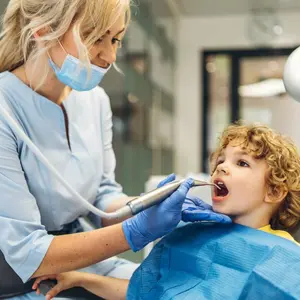
Healthy Kids
Healthy Kids
Ear Infections: Holistic Treatments for Kids
More than two-thirds of children develop at least one ear infection by the time they are 3 years old, and a third of these kids experience three or more episodes. “Ear infections may be painful, can lead to complications and are stressful for the child and their parents,” says Andy Smith, a chiropractic doctor who treats adults and children in Denville, New Jersey. But as children grow, the structures in their ears enlarge, their immune systems strengthen and their risk of infections decreases, with most youngsters outgrowing ear infections by age 5.
The common ear infection, or acute otitis media (AOM), is caused by a buildup of mucus in the middle ear and is accompanied by pain, fever, redness, swelling and possibly discharge, as viewed through an otoscope by a pediatric provider. Mucus can develop from nasal congestion and cough associated with the common cold, as well as from inflammation caused by diet, allergens, smoke, mold and other environmental toxins.
Symptoms of an ear infection in babies and toddlers include tugging on their ears, irritability and fever. Older children may complain of ear pain that may worsen when laying down, have a fever or display irritability, clinginess, decreased activity, loss of appetite, dizziness, vomiting or difficulty hearing. AOM may be caused by bacteria or viruses. The American Academy of Pediatrics strongly urges pediatric providers to wait and watch before prescribing antibiotics for ear infections because they often clear on their own within two to three days.
Children may also develop fluid in the middle ear without signs of an infection, pain or fever. Middle-ear fluid can be chronic and may lead to hearing loss and speech delays. Symptoms can include complaints of difficulty hearing, lingering cough and nasal congestion, or no symptoms at all. If a child is diagnosed with AOM and does not have pain or fever, parents should work with their pediatric provider to address the cause of the buildup of fluid rather than treat it with unnecessary antibiotics.
Prevention Strategies
Ear infections may be prevented by avoiding foods that lead to inflammation and mucus development. Many parents report their child’s first ear infection between 1 and 2 years old when they switch from formula or breast milk to diary, including milk, butter, yogurt, cheese and ice cream. Dairy may also be an ingredient in prepared or processed foods found at the grocery store. Dairy is associated with recurrent AOM because it causes mucus production in the body.
Frequent ear infections may also be caused by other food sensitivities or allergies to eggs, nuts, soy, corn or gluten, as well as exposure to environmental allergens. A child with recurring infections should consider a food elimination diet to identify the culprit. Avoiding exposure to tobacco smoke, wood burning stoves, scented detergents, shampoos, conditioners, body care products, candles, air fresheners and other artificially scented items can also decrease the risk of developing an ear infection and its symptoms.
Breastfed infants have a decreased risk of developing ear infections, according to a study in the journal Pediatrics. A healthy diet for a child or breastfeeding mom aids in optimal bowel function, which decreases the risk of mucus proliferation. Healing foods include organic, leafy greens and other vegetables; seasonal fruits; seeds; nuts; beans; seafood; seaweeds; whole grains; healing roots, such as turmeric and ginger; and plenty of water.
Natural Treatments
- Rest.
- Increase fluid intake, but avoid overly sugary drinks.
- Eat a healthy diet that includes warm, home-cooked meals that include garlic, onion, turmeric and ginger.
- Avoid dairy, processed foods and sugary, floury, cold and raw foods.
- Ear drops containing mullein or garlic oil assist in decreasing inflammation associated with AOM, unless there is discharge from the ear, which can indicate a ruptured eardrum. Breast milk can also be used as ear drops to decrease inflammation.
- Gentle massage with essential oils containing oregano or lavender to the outer ear and surrounding area assists in clearing mucus. However, never place these oils inside the ear.
- “Chiropractic care is often effective in decreasing the symptoms and removing the cause of AOM,” says Smith. “It enhances the brain-ear neurological control. A chiropractic treatment also improves cervical and thoracic lymphatic drainage, which allows the inner ear to properly drain.”
- Homeopathic remedies, such as belladonna, ferrum phosphate, pulsatilla, chamomilla and silica, may reduce symptoms. For optimal results, consult with a homeopath.
- Vitamins C and D, zinc and elderberry boost immune function and aid in fighting many infections. Check with a pediatric provider to determine the appropriate dosage for a child.
As a holistic pediatric nurse practitioner on Long Island, New York, Jennifer Zethner focuses on the root cause of chronic and acute childhood conditions.
Original article published at Natural Awakenings


 By
By






